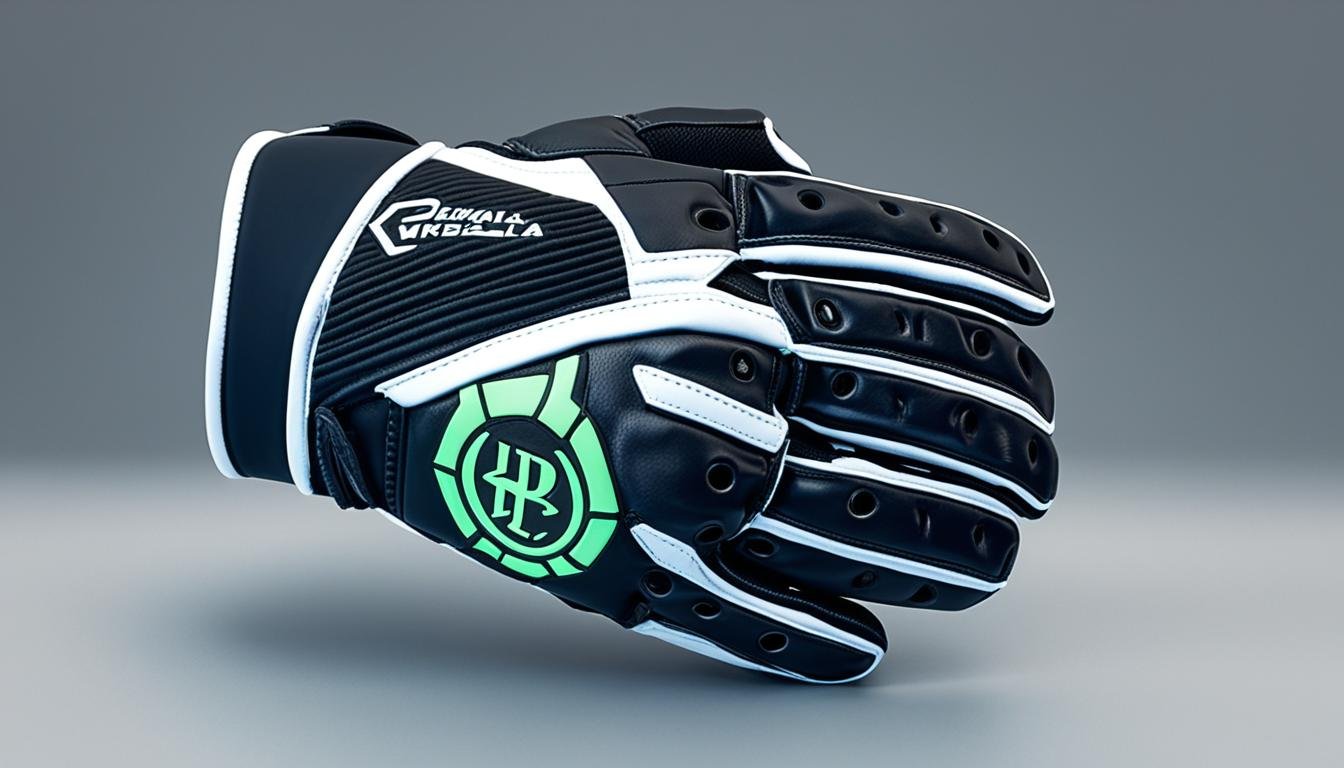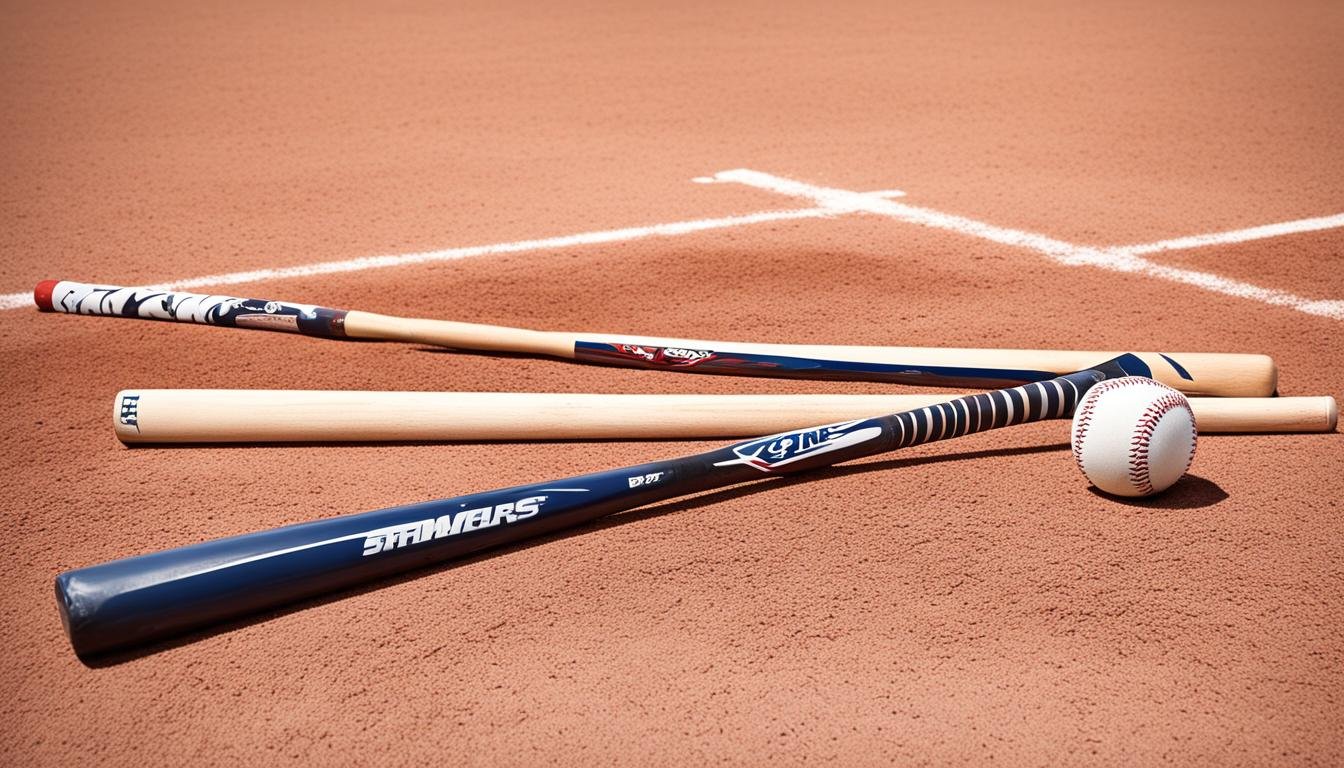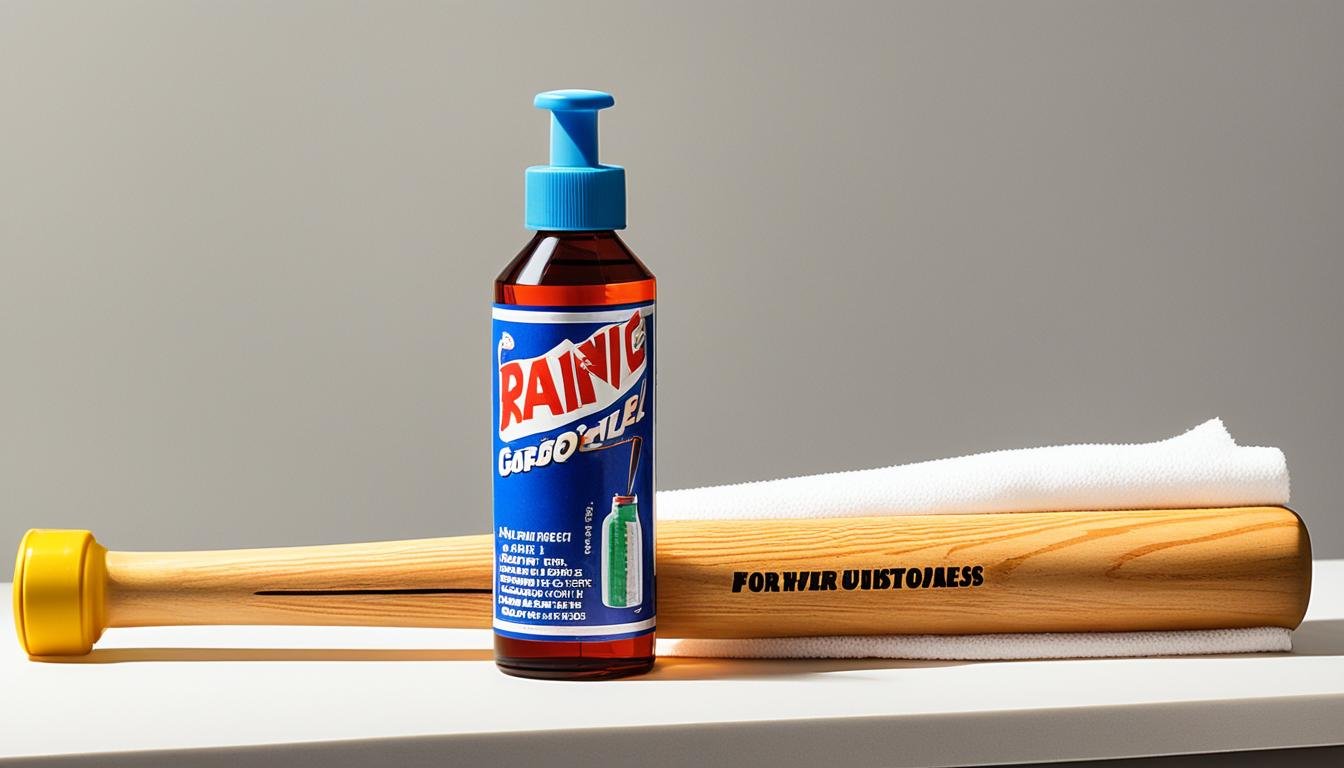Are There Specific Baseball Bat Regulations For Different Age Groups?
Babe Ruth once said, “It’s hard to beat a person who never gives up.” This spirit is key in youth sports. Having the right equipment is crucial for safety and fairness. It’s important to know the youth baseball bat regulations for each age group.
These rules help young athletes use equipment suited to their age and growth. They improve player performance and keep the game fair.
With youth sports evolving, keeping up with legal bat sizes for different ages is key. This ensures players follow current standards and stay safe. By understanding these rules, we can give our young athletes the best chance to succeed.
Key Takeaways
- Knowing the specific baseball bat regulations for different ages is crucial for safety and fairness.
- These rules make sure young athletes have the right equipment for their needs.
- Legal bat sizes vary by age and must be followed during games.
- Staying updated on bat standards is important for players and coaches.
- These rules help keep the game competitive for young baseball players.
Introduction to Baseball Bat Regulations
Baseball bat rules are key for young athletes and safety on the field. They shape how players get ready for games. Each league has its own rules for youth baseball bats, focusing on size, weight, and certification.
Specifications for amateur baseball bats change with age, which is important for parents and coaches to know. These rules tell us what bats are okay to use. Following these guidelines helps prevent accidents and makes the game better for young athletes.
Looking into these rules, I see how they help players do their best and stay safe. Knowing the rules lets us play the game without worrying about following them or staying safe.
Understanding Youth Baseball Bat Regulations
In youth baseball, different age groups have their own rules for bats. It’s key for coaches, parents, and players to know these rules. Each set of little league bat regulations aims to keep players safe and help them improve their skills.
The bat rules by age group help match players with the right equipment. For example, a bat for younger players might not be right for older ones because of their strength and hitting skills. Knowing these differences makes the game safer and more competitive.

Let’s look closer at these rules to understand their importance. Knowing which bats are allowed for your age group lets players feel ready and confident. Following these rules keeps the game fair and maintains its spirit.
| Age Group | Max Barrel Diameter | Length to Weight Ratio | Material Restrictions |
|---|---|---|---|
| 4-7 | 2.25 inches | Not specified | No restrictions |
| 5-11 | 2.625 inches | Minus 10 to minus 12 | Not allowed for certain leagues |
| 12-14 | 2.75 inches | Minus 3 | Not allowed for certain leagues |
| 15-16 | 2.75 inches | Minus 3 | Wood or BBCOR certified |
Specific Baseball Bat Regulations For Different Age Groups
Understanding baseball bat regulations is key for players, parents, and coaches. These rules ensure safety, fair play, and help prevent injuries. Each age group has its own set of rules that change as players grow and improve.
Following these rules makes the game more enjoyable and safer. It helps players focus on their skills, not the gear. Knowing the rules about youth baseball bats helps everyone have a good time.
Importance of Following Regulations
It’s crucial to follow baseball bat rules for a safe game. These rules make sure everyone uses the same kind of equipment. This makes the game fair and lets players improve their skills without worrying about their gear.
By knowing the rules about youth baseball bats, I can help make the game safe and fun for all. This way, everyone can enjoy the game more.
Overview of Age-Specific Standards
Baseball bat rules change with the player’s age and skill level. The table below shows the main rules for different age groups. It highlights the standards set for young athletes.
| Age Group | Typical Bat Length | Maximum Bat Diameter | Material Restrictions |
|---|---|---|---|
| Tee Ball (Ages 4-7) | 25-26 inches | 2.5 inches | Aluminum/Wood |
| Minor League (Ages 5-11) | 26-30 inches | 2.75 inches | Aluminum/Wood |
| Major Division (Ages 9-12) | 28-32 inches | 2.75 inches | Aluminum/Wood |
| Intermediate Division (Ages 12-13) | 30-34 inches | 2.75 inches | BBCOR compliant Aluminum/Wood |
| Junior League (Ages 12-14) | 30-34 inches | 2.75 inches | BBCOR compliant Aluminum/Wood |
| Senior League (Ages 13-16) | 32-34 inches | 2.75 inches | BBCOR compliant Aluminum/Wood |
Tee Ball Bat Regulations (Ages 4-7)
Exploring tee ball bat regulations for kids aged 4 to 7 is key. It ensures safety and good play. Following youth baseball bat guidelines makes the game better for young players. It also prepares them for the future in baseball.
Approved Bat Length and Diameter
Bats for this age group can’t be longer than 26 inches. They must not be wider than 2.5 inches. All bats need the USA Baseball stamp to show they meet the rules for young players. This stamp means the bats are safe for playing with standard tee balls.
Certification Requirements
Getting bats certified is a must. Parents and coaches need to check that each bat follows the tee ball bat regulations. This helps avoid injuries and keeps the game fun for everyone. For more info, check out this resource. It has details on certification and rules for youth baseball.

Minor League Bat Regulations (Ages 5-11)
As a parent, knowing the rules for youth baseball bats is key. It ensures my child is safe and has fun playing. Choosing the right bat means knowing the rules and finding a good balance between performance and comfort.
Size and Weight Restrictions
In Minor League, bats must meet certain size and weight rules. They can’t be longer than 33 inches, and the diameter can’t be more than 2 5/8 inches. It’s important to follow these little league bat requirements for safety and performance. When picking a bat, I look at both the weight and length to help my child swing well and stay in control.
Special Exceptions for Wood Bats
Wood bats have fewer rules in minor league baseball. They don’t need a USA stamp, giving kids more options. This lets me find bats that are safe and help my child improve their skills.
Knowing these rules helps me pick a bat that’s right for my child’s growth and fun. For more tips on choosing the best bat, check out this useful guide.
Major Division Bat Regulations (Ages 9-12)
When players move to the Major Division, they need to know the rules are similar to the Minor League’s. This keeps the game safe and consistent across ages. It makes it easier for players and parents to understand what’s needed.
Similarities to Minor League Regulations
The rules for Major Division bats are much like those for Minor League bats. Bats can’t be longer than 33 inches and can’t be wider than 2 5/8 inches. These rules help make sure players have the right gear for their age.
Certification and Usage Guidelines
All bats for the Major Division must have the USA baseball certification logo. This logo means the bat is safe and meets the standards for competitive play. Players should make sure their bats meet these rules to avoid issues during games. Always check the certification and size before the season starts.

Intermediate Division Bat Regulations (Ages 12-13)
Choosing the right bat for players in the Intermediate Division is key. It’s important to know the rules that apply. These rules make sure players use fair and safe equipment. They help parents pick the best gear for their kids.
Length and Diameter Requirements
Bats for this division can be up to 34 inches long. This gives players a good range of options to find the best fit. The maximum barrel size is 2 5/8 inches. It’s important to follow these rules to improve a player’s game.
BBCOR Standards for Bats
All non-wood bats must meet BBCOR standards. These rules ensure everyone plays safely and fairly. By checking if a bat is legal for the age group, injuries can be prevented. This is especially important for players aged 12-13 who swing harder.
| Feature | Specifications |
|---|---|
| Maximum Length | 34 inches |
| Maximum Diameter | 2 5/8 inches |
| Bat Type | Non-wood must meet BBCOR standards |
Junior League Bat Regulations (Ages 12-14)
Players aged 12 to 14 must follow strict bat rules. These rules make sure the equipment matches the players’ growing skills and strength. They also focus on keeping players safe during games.
Specifications Matching Intermediate Standards
Players need to use bats that fit the age-specific rules. These rules say bats can’t be longer than 34 inches or wider than a certain size. It’s important to follow BBCOR standards in this age group. This helps improve the game and keeps players safe.
Additional Certification Needs
Using the wrong bats can lead to penalties in games. If a bat doesn’t meet the rules, the player or team might get disqualified. It’s key to know these rules and make sure all bats are okay. For more info, check the official guidelines at Babe Ruth League’s bat rules.

Senior League Bat Regulations (Ages 13-16)
For players aged 13 to 16, knowing the senior league bat rules is key. These rules make sure all gear is safe and helps players perform their best. Not following these rules can cause a player to be disqualified or even get hurt.
Length and Diameter Guidelines
Bats for the Senior League must not be longer than 36 inches. They should also have a barrel diameter of 2 5/8 inches. These rules are in place to keep young players safe and improve their skills on the field.
Drop – Length to Weight Ratio
The drop length to weight ratio is also important when choosing a bat. For Senior League players, a drop 3 ratio is required. This means the bat must be three ounces lighter than its length in inches. This rule helps players swing the bat properly and control it better. Following these rules ensures players use the right bat sizes for their age and improves their game. For more info on bat rules, check out this useful resource.
| Regulation | Description |
|---|---|
| Max Bat Length | 36 inches |
| Max Barrel Diameter | 2 5/8 inches |
| Drop Ratio | Drop 3 (weight is 3 ounces less than length) |
Impact of Regulations on Players
Knowing the rules about youth baseball bats is key for young athletes. Rules about bat size based on age can greatly affect a player’s skills and growth. These rules make the game fair and help players develop their skills safely.
As players get older, the rules change. The impact of regulations on players changes too. Rules make sure players use bats that fit their size and strength. This helps players feel confident and improves their batting skills and game performance.
Following age-based bat size rules means all players compete fairly. This fair play is important for a positive youth baseball experience. It makes the game more enjoyable for everyone.

In short, youth baseball bat rules are crucial for growth in skills and confidence. Understanding the importance of age-based bat size rules changes how athletes play. It makes their sports journey better overall.
Additional Bat Requirements for Other Leagues
In youth baseball, knowing the youth baseball bat certification standards is key. Leagues like Babe Ruth or Cal Ripken Baseball have their own rules. These rules might be different from Little League’s. Parents and coaches need to know these rules to make sure young players play fairly and safely.
Each league has its own bat restrictions for different youth leagues. Some leagues allow many materials, while others limit bats to certain certified ones. It’s important to look up the league’s rules before buying a bat.
As players get better, they’ll need to know about college baseball bat requirements. College leagues have their own rules that are different from youth leagues. This means players need to think more about their bat choices.
To pick the right bat, it’s a good idea to look at all the resources available. A great place to start is this guide on Little League bat rules and sizes. It offers helpful advice for choosing the right bat for your young athlete.
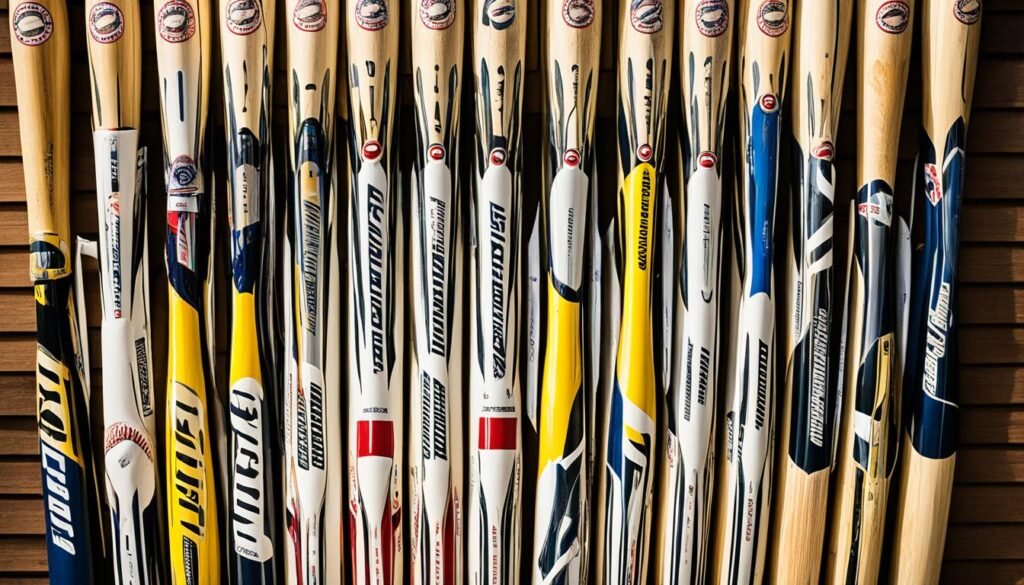
Legal Bat Sizes for Different Age Groups
Knowing the legal bat sizes for different ages is key for following youth baseball bat standards. The size of a bat changes with each age group. This change helps players use equipment that fits their skill and growth. Understanding bat sizes by age can really help a player do better on the field.

| Age Group | Max Length (inches) | Max Diameter (inches) | Common Bat Types |
|---|---|---|---|
| 4-7 | 25.5 | 2.5 | Tee Ball bats |
| 5-11 | 30 | 2.625 | Aluminum, Composite |
| 9-12 | 32 | 2.75 | Wood, BBCOR |
| 12-13 | 33 | 2.75 | BBCOR |
| 13-16 | 34 | 2.75 | Wood, Composite |
Each division has its own rules for bat types and sizes, set by league rules. Knowing these rules helps with following the rules and keeps players safe and performing well. To keep my bat in good shape, I follow guidelines on bat care found in resources like this guide on bat maintenance.
Why Bat Regulations Matter for Safety
Understanding *why bat regulations matter* is key for player safety. These rules help prevent injuries from equipment. They make sure players have the right gear for their level, especially for young athletes still learning.
The Role of Certification in Enhancing Safety
Certification is crucial for keeping leagues safe. Groups like USA Baseball set *youth baseball bat certification standards*. A certified bat has passed tough tests, meeting safety and performance rules. This means the bat is right for the player’s age and lowers injury risks from bad equipment.

Players feel safe and confident with *approved bats by age group*. Parents can be sure their money is well spent on safe gear. Certification lets leagues focus on a safe playing space. This way, athletes can just enjoy the game.
Resources for Understanding Bat Regulations
Understanding baseball bat regulations can be tough for players, parents, and coaches. It’s key to use resources for understanding bat regulations to stay safe and follow the rules. These resources help everyone, whether you’re new to baseball or just need a refresher.
Official league websites are great for learning about Little League bat requirements. They give clear info on certifications, lengths, and weight ratios needed. Plus, local league leaders can help with questions about your team.
At the high school level, knowing about high school baseball bat specifications is important. Many schools follow BBCOR standards for safety and fairness. I suggest looking into guides that explain the benefits of composite and alloy bats.

For a detailed look at bat buying trends and rules, check out this guide. It offers tips on choosing the right bat for your age group and league, helping you make better buying choices.
| Category | Resources |
|---|---|
| Little League | Official Little League Website, Local League Administrators |
| High School | BBCOR Guidelines, High School Athletic Association |
| General Information | Baseball Retailer Guides, Coaching Clinics |
Using these resources can really help you get the hang of bat regulations. It makes for a better baseball experience for everyone.
Staying Updated on Baseball Bat Standards
As a baseball enthusiast, I know how important it is to keep up with baseball bat standards. It’s crucial to check for changes in rules to stay compliant. Knowing the bat rules for different age groups helps me pick the right gear for players moving up in leagues.
High school baseball bat guidelines can change a lot from one group to another. Keeping up with these changes improves my knowledge and helps keep players safe and performing well.
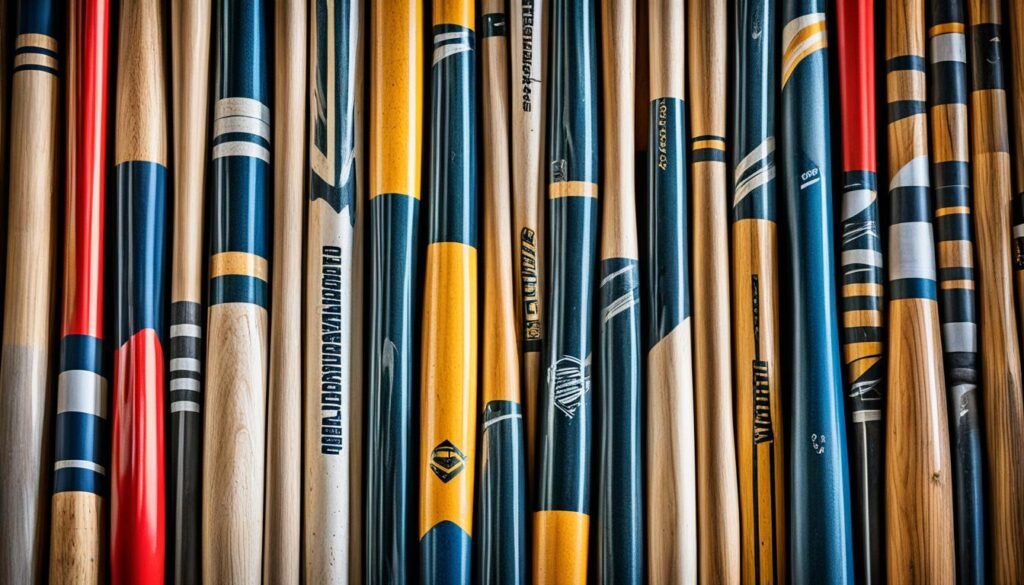
- Regularly visit official league websites and governing bodies for updates.
- Subscribe to newsletters that specialize in youth and high school baseball.
- Engage with local baseball communities or forums where changes in regulations are discussed.
- Attend seminars or workshops focused on baseball regulations and standards.
By staying ahead, I can make sure players have the right gear. This ensures they follow the rules and stay safe as they play better baseball.
| Age Group | Key Bat Standards | Certification Requirements |
|---|---|---|
| Tee Ball (Ages 4-7) | Max length of 26 inches, 2.5 inches diameter | USA Baseball certified |
| Minor League (Ages 5-11) | Max length of 30 inches, weight specific | USA Baseball or USSSA certified |
| Major Division (Ages 9-12) | Max length of 32 inches, 2.75 inches diameter | BBCOR certified or USA Baseball certified |
| High School (Ages 14-18) | BBCOR certified, max drop of -3 | Must meet high school regulations |
Conclusion
Reflecting on baseball bat rules for different ages shows how vital they are. Players, coaches, and parents must take these rules seriously. They make sure the game is safe, fair, and helps players grow.
Rules vary by age to help players compete fairly and stay safe. Choosing the right bat is key. It boosts performance and supports a lifelong love for baseball.
For those wanting to learn more about bats for power hitters, check out more resources. This info is key for players and parents serious about youth baseball. It helps in succeeding on and off the field, making baseball more enjoyable for everyone.
For more info on picking the right bat, see this helpful guide on the best bats for power hitters. It covers important features that match performance and safety.


